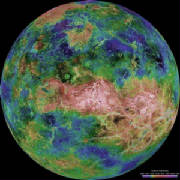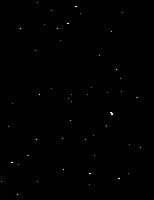|
The Solar System
 Our solar system consists of an average star we call the the sun, the planets Mercury, Venus, Earth, Mars,
Jupiter, Saturn, Uranus, Neptune, and Pluto. It includes: the satellites of the planets; numerous comets, asteroids, and meteoroids;
and the interplanetary medium. The Sun is the richest source of electromagnetic energy (mostly in the form of heat and light)
in the solar system. The Sun's nearest known stellar neighbor is a red dwarf star called Proxima Centauri, at a distance of
4.3 light years away. The whole solar system, together with the local stars visible on a clear night, orbits the center of
our home galaxy, a spiral disk of 200 billion stars we call the Milky Way. The Milky Way has two small galaxies orbiting it
nearby, which are visible from the southern hemisphere. They are called the Large Magellanic Cloud and the Small Magellanic
Cloud. The nearest large galaxy is the Andromeda Galaxy. It is a spiral galaxy like the Milky Way but is 4 times as massive
and is 2 million light years away. Our galaxy, one of billions of galaxies known, is traveling through intergalactic space.
The planets, most of the satellites of the planets and the asteroids revolve around the Sun in the same direction,
in nearly circular orbits. When looking down from above the Sun's north pole, the planets orbit in a counter-clockwise direction.
The planets orbit the Sun in or near the same plane, called the eclpitic. Pluto is a special case in that its orbit is the
most highly inclined (18 degrees) and the most highly elliptical of all the planets. Because of this, for part of its orbit,
Pluto is closer to the Sun than is neptune. The axis of rotation for most of the planets is nearly perpendicular to the ecliptic.
The exceptions are Uranus and Pluto, which are tipped on their sides.
The Sun contains 99.85% of all the matter in the Solar System. The planets, which condensed out of the same disk of material
that formed the Sun, contain only 0.135% of the mass of the solar system. Jupiter contains more than twice the matter of all
the other planets combined. Satellites of the planets, comets, asteroids, meteoroids, and the interplanetary medium constitute
the remaining 0.015%. The following table is a list of the mass distribution within our Solar System.
- Sun: 99.85%
- Planets: 0.135%
- Comets: 0.01% ?
- Satellites: 0.00005%
- Minor Planets: 0.0000002% ?
- Meteoroids: 0.0000001% ?
- Interplanetary Medium: 0.0000001% ?
|

